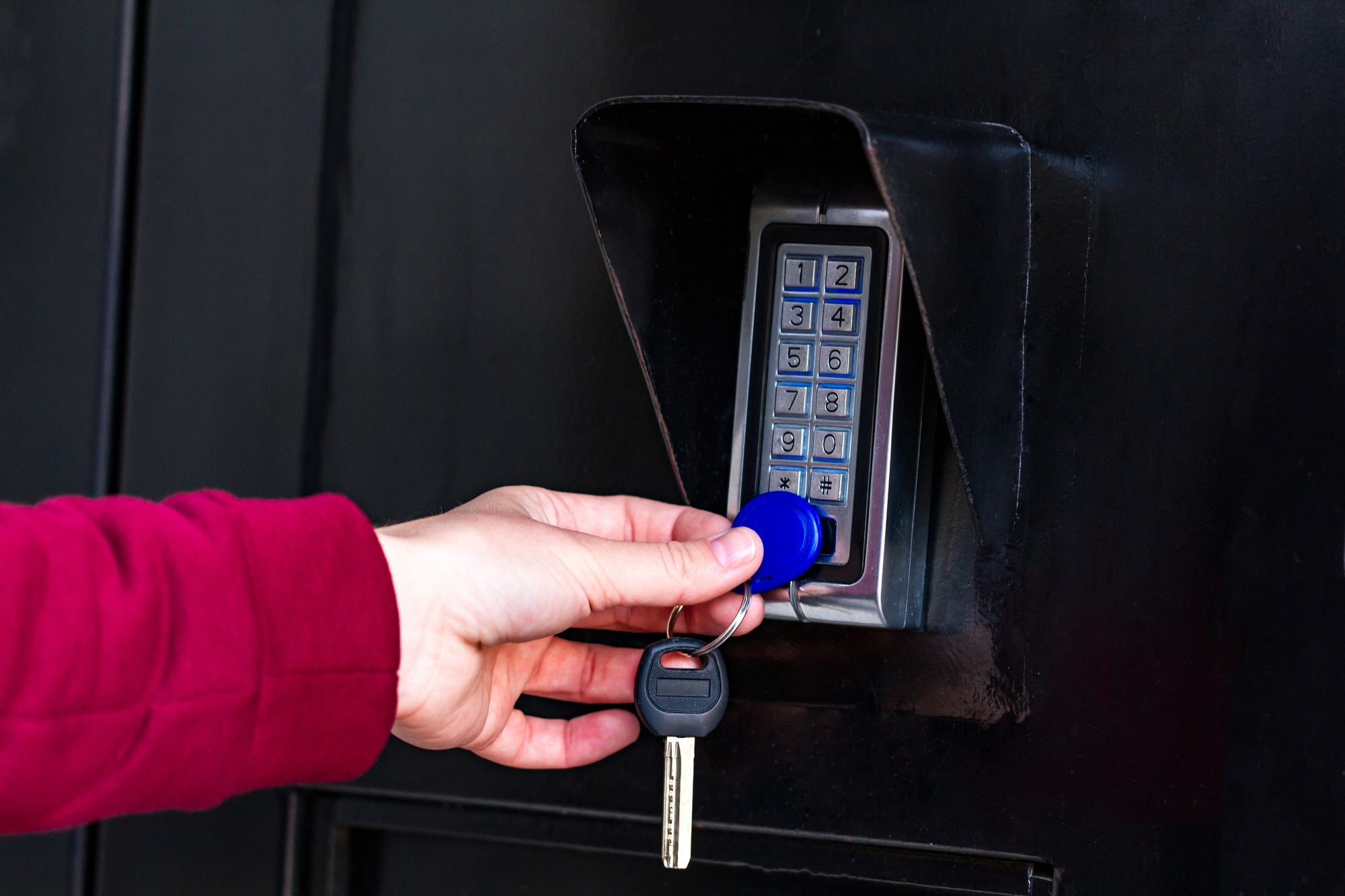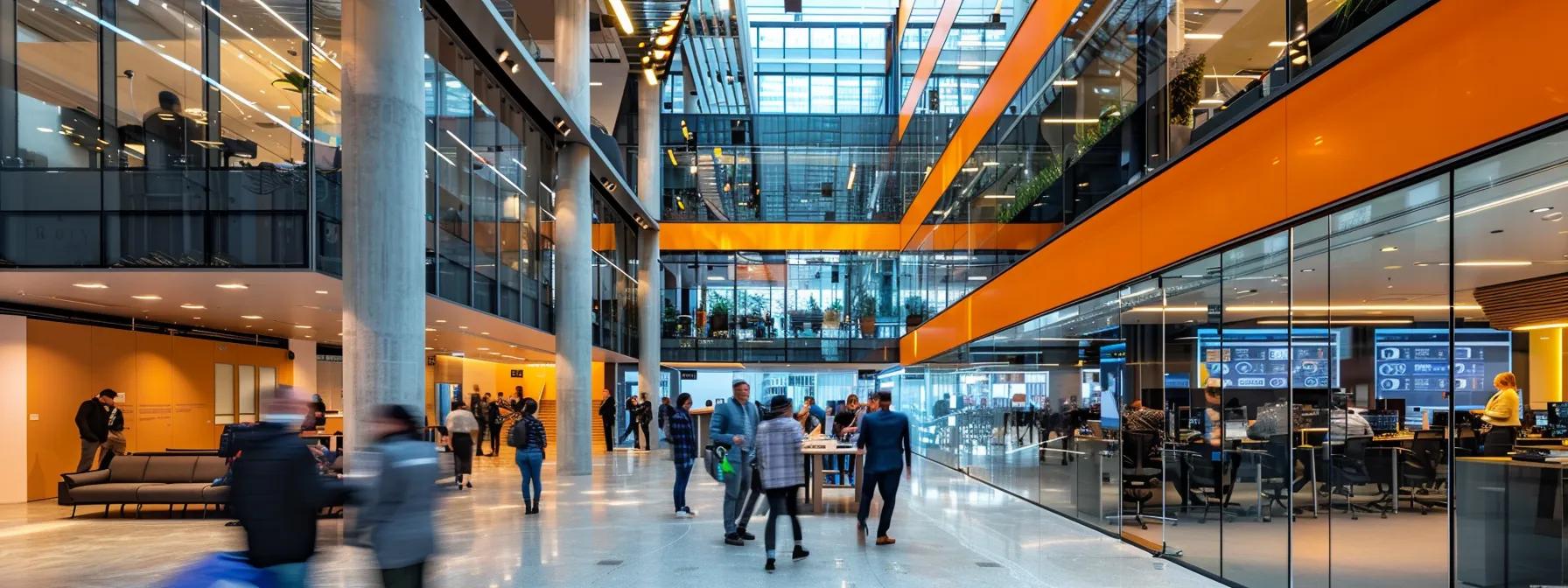
In today’s fast-paced and ever-evolving business landscape, ensuring the safety of employees is paramount. Amidst a wide array of security challenges, from physical threats to data breaches, businesses are increasingly turning to sophisticated solutions to safeguard their most valuable asset: their people. At the forefront of these solutions are advanced access control systems, designed not just to secure premises but also to create a safer working environment for everyone involved.
Access control systems, with their ability to regulate who can enter or leave a building, play a crucial role in preventing unauthorized access and protecting employees from potential harm. But their benefits extend far beyond simple gatekeeping. Modern access control solutions offer a blend of technology and customization that can adapt to the unique security needs of any business, enhancing not only safety but also operational efficiency.
Let’s explore how advanced access control solutions are revolutionizing employee safety. From traditional keycard access to cutting-edge biometric and mobile-based systems, we’ll explore the mechanisms these technologies employ to fortify workplace security. Join us as we uncover the critical role access control systems play in fostering a secure, alert, and responsive work environment, ensuring that safety is always at the forefront of business operations.
The Basics of Access Control Systems
At its core, an access control system is a sophisticated technology designed to manage entry into or within a facility. It serves as the first line of defense against unauthorized access, ensuring that only approved individuals can enter specific areas of a business. As we delve deeper into the mechanics of these systems, it’s essential to understand the variety of formats they come in and how they’ve evolved over time.
- Traditional Systems: Historically, access control was managed through physical keys, pin codes, or magnetic stripe cards (keycards). While effective to an extent, these methods have their limitations, such as the risk of lost keys or shared codes.
- Modern Systems: Today, technology has paved the way for more secure and efficient solutions, including:
- Biometrics: Utilizing unique physical characteristics, such as fingerprints or facial recognition, for identification.
- Mobile Access: Allowing entry through a smartphone app, leveraging encrypted digital keys and sometimes even location-based services.
- Smart Cards and Fobs: Employing advanced encryption and embedded chips to enhance security beyond traditional magnetic stripes.
The purpose of these systems extends beyond merely deciding who can enter or leave; they are integral to managing a safe, controlled environment. Here’s how:
- Customization: Access control systems can be tailored to fit the specific security requirements of any area within the premises, from general entry points to high-security zones.
- Integration Capability: Modern systems can seamlessly integrate with other security measures, such as surveillance cameras or emergency alert systems, to provide a comprehensive security solution.
- Adaptability: They can be programmed and reprogrammed to accommodate changes in personnel or security levels, offering flexibility and scalability to businesses as they grow or evolve.
Understanding these basics is crucial in appreciating how access control systems can be leveraged to enhance employee safety, which will be our next focus.
How Access Control Systems Enhance Employee Safety
Implementing an advanced access control system is more than a security measure; it’s an investment in creating a safe and secure workplace. Here’s how these systems play a pivotal role in protecting employees:
- Preventing Unauthorized Access
- Key Feature: Customizable entry permissions ensure that only authorized personnel can access specific areas, significantly reducing the risk of intruders or potential threats entering the workplace.
- Impact: This selective restriction helps maintain a secure environment, especially in areas where sensitive information or valuable equipment is stored.
- Customizable Access Levels
- Granular Control: Access levels can be tailored to individual roles within the organization, ensuring employees can access only the areas necessary for their work.
- Safety and Privacy: This minimizes potential internal threats and protects against accidental or intentional access to hazardous areas.
- Integration with Other Security Systems
- Comprehensive Security Approach: Access control systems can be integrated with video surveillance, alarm systems, and even emergency response technologies.
- Bullet Points:
- Enhanced situational awareness through real-time video monitoring linked to access events.
- Immediate alarm notifications in case of unauthorized access attempts, ensuring swift response to potential security breaches.
- Real-Time Monitoring and Alerts
- Continuous Oversight: Administrators can monitor access logs in real-time, allowing for immediate detection of any unusual access patterns or unauthorized attempts.
- Proactive Safety Measures:
- Mobile alerts can notify security personnel instantly about potential breaches, enabling a rapid response.
- In emergency situations, access control systems can facilitate a lockdown or guide evacuation by controlling door locks remotely.
These features underscore the critical role of access control systems in not just safeguarding physical assets but, more importantly, ensuring the well-being and safety of employees. By providing a secure environment, businesses can foster a sense of security among their workforce, which is instrumental in maintaining high morale and productivity.
Case Studies: Success Stories of Access Control Solutions

Implementing advanced access control solutions has proven to be a game-changer for many organizations, significantly bolstering their security posture and ensuring employee safety. Below are examples that highlight the effectiveness of these systems in various settings:
Case Study 1: Tech Startup Embraces Biometric Access
- Background: A rapidly growing tech startup faced challenges in securing its open-plan office space, which housed sensitive data and expensive equipment.
- Solution Implemented: The company installed a biometric access control system, utilizing fingerprint recognition for entry into the building and specific secure areas.
- Outcome:
- Enhanced Security: Unauthorized access attempts dropped to zero.
- Employee Peace of Mind: Staff reported feeling safer knowing that entry was tightly controlled and monitored.
Case Study 2: Healthcare Facility Upgrades to Smart Access Control
- Background: A healthcare facility needed to restrict access to patient records and medication storage areas to comply with privacy regulations and ensure patient safety.
- Solution Implemented: The facility upgraded to a smart card access control system, providing staff with cards programmed with specific access permissions.
- Outcome:
- Regulatory Compliance: Met all health privacy regulations by securing sensitive areas.
- Improved Safety Measures: Real-time tracking of access ensured that only authorized personnel could enter high-risk areas, reducing the risk of internal theft or data breaches.
Case Study 3: Manufacturing Plant Tackles Insider Threats
- Background: A manufacturing plant struggled with inventory shrinkage and suspected internal theft.
- Solution Implemented: Integration of access control with video surveillance systems to monitor and control access to inventory storage areas.
- Outcome:
- Decreased Theft: Marked reduction in inventory discrepancies and suspected theft incidents.
- Accountability: Enhanced visibility and traceability of employee movements within restricted areas.
These case studies demonstrate the versatility and effectiveness of access control systems across various industries. By tailoring solutions to meet specific security needs, businesses can protect their employees, assets, and sensitive information from both external threats and potential internal vulnerabilities.
Choosing the Right Access Control System
The decision to implement an access control system should be informed by the unique requirements and characteristics of your business. Here are key factors to consider when choosing the most suitable access control solution:
- Assess Your Security Needs
- Identify Sensitive Areas: Determine which parts of your premises require restricted access. This could range from server rooms to research labs.
- Consider the Size of Your Premises: Larger facilities may need a more scalable and integrated solution to manage access efficiently.
- Evaluate System Features
- Type of Authentication: Decide between keycards, mobile access, biometrics, or a combination, based on the level of security needed.
- Integration Capabilities: Ensure the system can integrate with other security systems (e.g., CCTV, alarms) for a unified security management approach.
- Understand Compliance Requirements
- Certain industries may have regulatory requirements dictating the type of access control systems that must be used. Ensure your choice complies with these standards.
- Budget and Scalability
- Initial Investment vs. Long-Term Value: While cost is a significant factor, consider the long-term benefits and potential savings from reduced security incidents.
- Scalability: Choose a system that can grow with your business, allowing for easy addition of access points or integration with new technologies.
- Consult with Security Professionals
- Engaging with experts can provide valuable insights into the best practices and technologies suited to your specific needs. They can also assist with the seamless integration of the access control system into your existing security infrastructure.
Final Thoughts
 Selecting the right access control system is a critical step towards enhancing the safety and security of your employees and premises. By carefully considering your specific needs, evaluating the available features, and consulting with professionals, you can ensure that your investment effectively protects your most valuable assets.
Selecting the right access control system is a critical step towards enhancing the safety and security of your employees and premises. By carefully considering your specific needs, evaluating the available features, and consulting with professionals, you can ensure that your investment effectively protects your most valuable assets.




